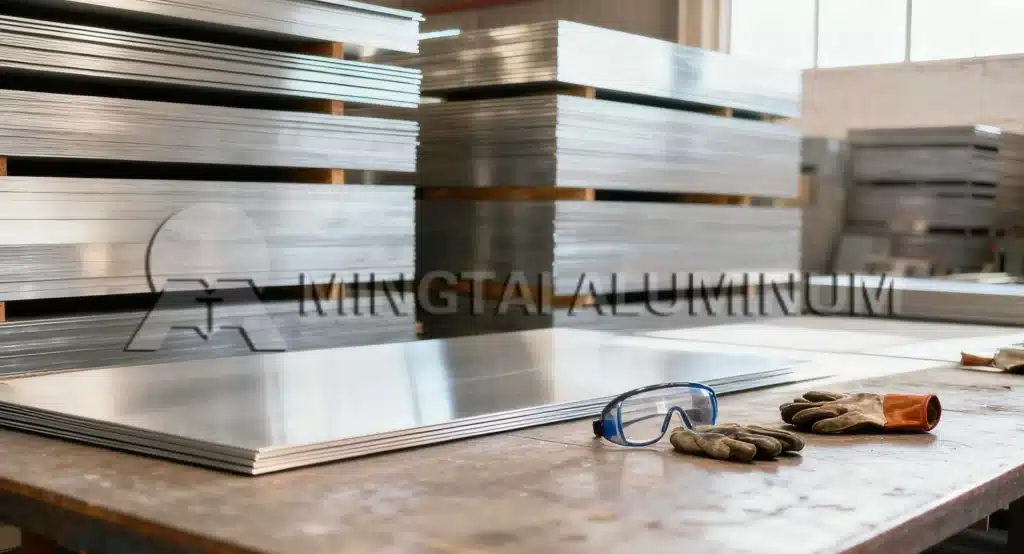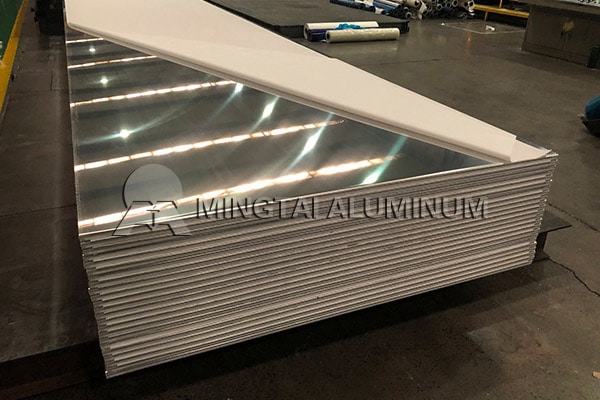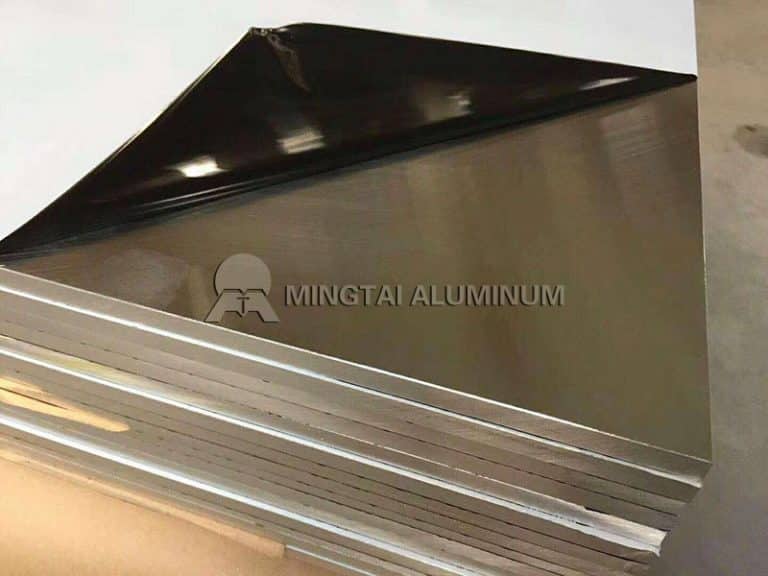
Aluminium is lightweight, sturdy, rust-resistant, and easy to recycle. You see it all over—from traffic signs and trailer sides to boat parts and toolboxes. The aluminum tool box is essential for commercial trucks: durable, light, and weather-proof. Sheets still need sharp, accurate cuts to work properly. Nice cuts give better appearance, fit, and safety.
Not every aluminium sheet is identical. They differ in thickness and grade (such as 3003-H14, 5052-H32, 6061-T651). Each grade has its own advantages. Choose the correct tool for the task—depending on thickness, edge finish, accuracy, and cost.
Safety comes first. Always put on:
- Safety glasses
- Leather gloves
- Long sleeves & pants
- Steel-toe boots
- Hard hat (if needed)
These guard you from sharp edges and flying pieces.
Essential Tools for Cutting Aluminium
Tin Snips
Tin snips work great for thin aluminium sheets—usually up to 1.4mm thick. These hand tools provide good control and exactness. They suit small cuts or curved lines. People often use them in HVAC jobs or simple building projects.
Angle Grinder
An angle grinder spins fast. It can slice, smooth, or polish aluminium with the proper disc. It handles thicker sheets and gives speedy results. For top results and safety, choose discs built for soft metals. Run at medium speeds to stop excess heat.
Circular Saw
People mostly use circular saws for wood. Yet with a carbide-tipped blade, it slices aluminium sheets well. It produces clean, straight lines fast. Pick blades with fewer teeth (like 60-tooth for thin sheets). This reduces clogging and gives a better surface.
Band Saw
Band saws perform well for thicker aluminium or tricky forms. Use the proper blade—usually bi-metal or carbide-tipped. You obtain clean cuts with little burr. Adjust blade speed and push speed by sheet thickness. This leads to improved outcomes.
Jigsaw
A jigsaw lets you cut curves and custom forms in aluminium exactly. Equip it with fine-tooth blades made for metal (like high-speed steel types). It gives flexibility without dropping cut quality. Keep a firm hand to stay in charge on detailed cuts.
Plasma Cutter
A plasma cutter uses an electric arc to cut metal. It serves for thick aluminium sheets or fine designs. It delivers high accuracy and quickness. But you need experience to use it safely and well. Perfect for expert or factory work.
Oxy-acetylene Torch
This approach mixes oxygen and acetylene gases to create a flame. It slices thick aluminium pieces. It works for tough tasks. Yet it requires strong skills. Heat might cause warping or bending.
Water Jet Cutter
Water jet cutting fires high-pressure water with grit to slice aluminium neatly and precisely. Quality standards for laser cutting & Precision tolerance Controlled at ±0.2mm, special needs can be customized to meet customer precision requirements. It creates edges without burrs or heat change. Ideal for detailed or fragile parts. Also, water gets reused. This lowers waste and helps the planet.
Hydraulic Guillotines
Hydraulic guillotines work with two strong blades. They cut aluminium sheets in one quick action. They fit large factory tasks. They provide even cuts on big sheets with little hand effort.
Choosing the Right Cutting Method
Picking the best tool depends on a few points:
- Sheet Thickness: Tin snips suit thin sheets. Thicker stuff may need circular saws or plasma cutters.
- Finish Quality: Water jet cutters and band saws give smoother edges. Angle grinders might leave rougher ones.
- Precision Requirements: Jigsaws or water jets fit detailed forms. Guillotines work for straight lines.
- Budget and Equipment Availability: Hand tools like tin snips cost less. Plasma cutters and water jets need more cash but deliver better results.
Pair the method with your project needs. This brings speed and good work.
Tips for Clean, Precise Cuts
Maintaining Tool Sharpness
Always use sharp blades or discs on aluminium. Blunt tools cause rough edges, extra friction, and even bent material.
Lubrication
Put cutting fluid or oil on during cuts. It cuts down heat. It betters the finish, stops tool damage, and lengthens blade life. This is extra important with circular saws or band saws.
Steady Hands and Controlled Movements
For hand tools or machines, keep steady pressure and even motion. This keeps control of the tool and sheet. Clamp the sheet firm. This reduces shakes that harm exactness.

Cutting aluminium needs grasp of the metal traits and tools at hand. From basic tin snips for light work to high-end water jet setups for factories, each way brings clear gains for your exact needs. No burrs, no scratches. Clean cuts raise the look of the end item. They also boost use by giving proper fit and cutting dangers from sharp edges or bad sizes.
For top-quality aluminium sheets built to fit many factory needs—like food holders, boat uses, car parts, and support pieces—think about buying from trusted sources like MINGTAI ALUMINUM. Our big selection includes grades such as 3003-H14, 5052-H32, 6061-T651, and more. All are known for strength and fine machining features. Whether you build transport systems or custom pieces, working with MINGTAI ALUMINUM means you get supplies matched to your details.
FAQ
Q: What is the best tool for cutting thin aluminium sheets?
A: The best tool for cutting thin aluminium sheets (up to 1.4mm thick) is tin snips. These hand tools offer precision and maneuverability. They are ideal for small cuts and curved shapes.
Q: Can I use a circular saw to cut aluminium?
A: Yes, you can use a circular saw to cut aluminium. When fitted with a carbide-tipped blade, it will make clean, straight cuts quickly. For thinner sheets, use a blade with fewer teeth to minimize clogging.
Q: What cutting method provides the cleanest edges for aluminium?
A: The water jet cutter is the best option for producing clean edges without heat distortion. This method uses high-pressure water mixed with abrasives to cut through aluminium with high precision. It leaves burr-free edges.
Q: How do I achieve clean cuts without rough edges when using a plasma cutter?
A: To achieve clean cuts with a plasma cutter, ensure the proper settings are used. Maintain a steady hand while cutting. Plasma cutters are ideal for thicker materials and detailed patterns. But they require skill to avoid rough edges or excess heat.




